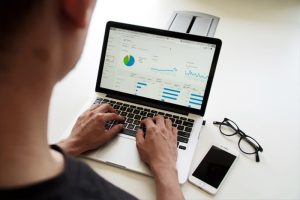The disruptions caused by the current pandemic have prompted the ascent of online learning frameworks in the U.S. and worldwide. Remote learning has become a new lexicon amidst educators who are forced to develop new means of imparting education. Additionally, experienced researchers continuously conduct sessions to discuss “monitoring, evaluation, and learning: (MEL) during the crisis-Tiina Pasanen.
While U.S. President Joe Biden said that ” reopening schools are a top goal for the country,” the school reopening debate seems to have created a rift between the communities. School leaders around the nation are considering the possibility of more remote learning in the following school session.
The vast majority of the schools and colleges clinging to virtual training methods are simultaneously changing student data collection practices. A study from The American Institutes for Research and the University of Chicago Consortium on School Research showed that “students who attempted credit recovery had lower rates of success online than in person.” (The Franklin Post)
Schools adapting to digitizing lesson plans to conduct classes and access the internet and technology pose massive data-gathering challenges. The policymakers toggle between how well schools will implement remote learning and whether the form will present any viable data for teachers’ actionable insights.
Although Edtech companies can help their bit in bringing data under one roof. In our previous blog, we understood the importance of Edtech companies and their role in facilitating teachers’ actionable insights by studying student data. It becomes quite challenging for teachers to collect the data under one roof and make timely remote learning decisions.
Having noted this critical point, let us move forward and analyze some other challenges in student data gathering posed by distant learning.
Challenges to changing roles of instructors:
The prime concern of instructors is how remote learning will change their roles in the existing education system. A National Survey of Attitudes of Higher Education Faculty conducted by Clark (1993) revealed a moderately negative attitude about using remote education. Additionally, there is a risk of “losing our collection, a rush to convenience, cost-effectiveness, and accountability” (Gober 1998). Once the study material is put online, delivering the knowledge and curriculum in a controlled way is out of the instructor’s hands.
Policymakers and educators concentrate their concerns on finding the balance between in-person instructions and remote learning instructions. Distant learning isn’t always rewarding. In the competitive world, businesses do not recognize off-campus learning as excellent means of teaching. These worries are valid.
The need to digitize instructional resources, creating robust tracing systems, and bridging the gaps between teacher and student learning will require collaborating data that provides valuable insights.
Digitize assessments to track academic data during the pandemic better:
One of the critical barometers in testing student achievement for preparing comprehensive student data is standard tests conducted annually face to face. Read how student data helps measure student achievement: Best Practices To Use Student Data For Student Achievement.
Now that institutions are making conclusive moves and currently digitizing instructional assets, educators utilize Google Classroom or other learning frameworks to reform school appraisals for simple online access or put resources into conventional information and evaluation stages.
There will be a consistent requirement for school pioneers to assist teachers and guide them through the technological tools meant to assess students. This way, teachers will navigate remote learning equipment like- Google Classroom, Zoom, Google Meet, or Canvas. Creating a step-by-step guide for learning through online platforms to promote remote learning is a time-consuming process. However, once achieved, it can facilitate the smooth transition of the onboarding cycle for future recruits.
Quality Of Instructions:
Despite the promises and advantages to remote learning, problems that follow it cannot be ignored. These problems include checking the quality of instructions for gathering student performance data, using technology, changing students’ attitudes, and administrators to remote learning. A significant challenge is the Quality of Instruction. Much of the instructions in remote education depend on the instructor’s attitudes.
Data collected in a 1999 study by Elliot Inman and Michael Kerwin showed instructors rating quality of remote learning as only equal or lower than other classes taught.”
Remote learning might have many advantages in terms of cost-effectiveness due to advanced technological progress; it is imperative to know that technology does not create brilliant students; effective teachers do. The issue is not technology but the use of it. This affects the quality of instruction. This seems hardly conducive to a student learning environment.
Cost-Effectiveness:
Another issue in remote learning and data gathering is cost-effectiveness. We may say here that online means of collecting data are better than offline means of data collection. However, are they cost-effective? The potential cost-effectiveness of implementing technology in remote learning is still debatable. Atkinson notes- “it is a cost-effective program to be efficient and cost-effective if the outputs which are produced do not contribute to the program objectives: that is it may be efficient at doing the wrong things.”
Setting up new equipment for supporting video lectures, audios, and intelligent classes that facilitate student learning may cost thousands of dollars. Additionally, maintaining this equipment isn’t beneficial in giving the instructor the actual cost to deliver a successful lecture.
Conclusion
We may conclude from the above discussion and troubles in remote learning that technology will undoubtedly improve shortly. Despite problems in the distant learning methods, studies indicate that computer-assisted programs comprehensively change the means of acquiring data. Instructors also need to realize that technology is an integral part of learning curves, and it involves adopting new roles. Increasing numbers of data in remote learning need comprehensive and thoughtful evolutions.






